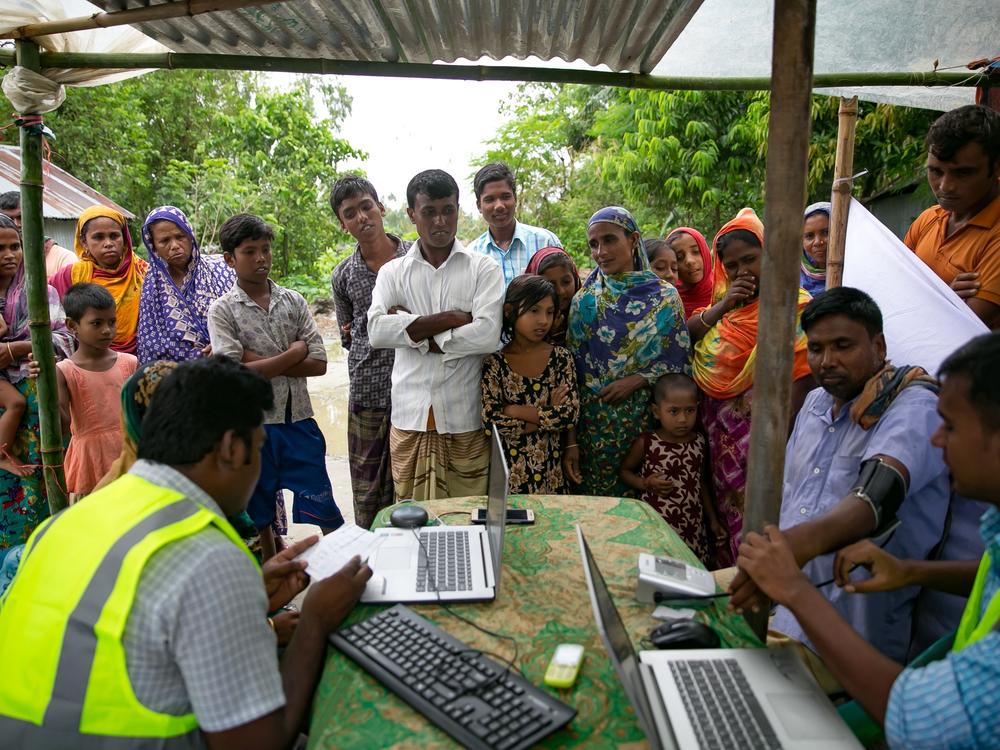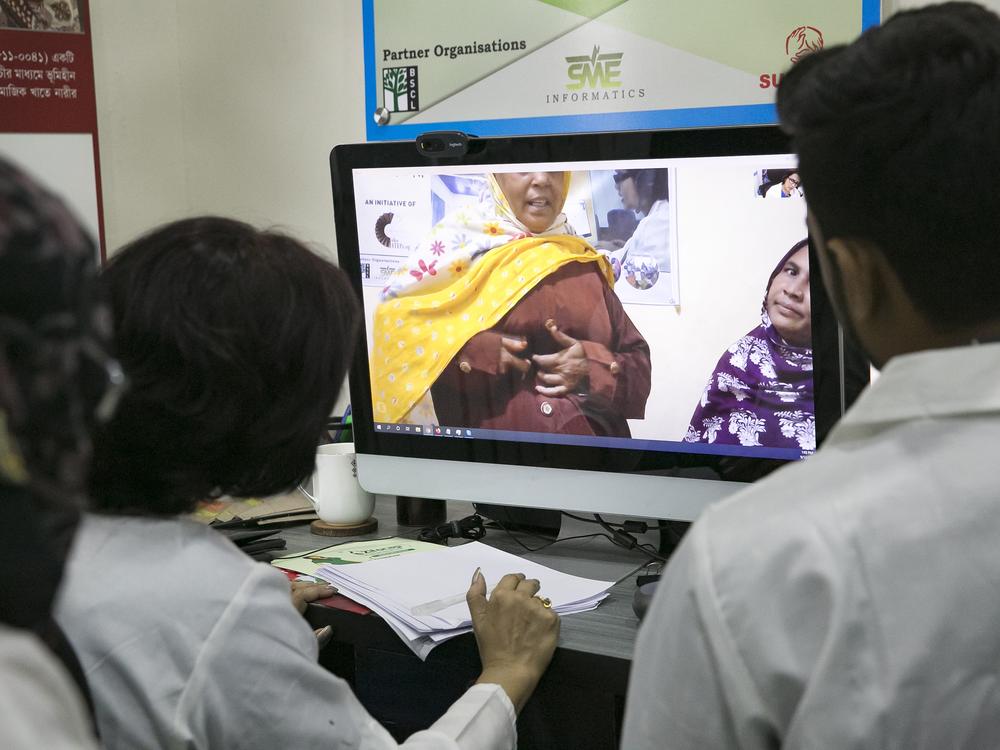Section Branding
Header Content
Bangladesh defies stereotypes when it comes to health care. Let's keep it that way
Primary Content
When people think of Bangladesh, they often think of poverty. It was one of the world’s poorest nations when it was created in 1971. And they probably think of political upheaval — this year massive protests led to the resignation of the prime minister. An interim government led by Nobel Prize winner Muhammad Yunus is now in place.
But Bangladesh defies the stereotypes. It has quickly moved up to lower middle-income status (average income is approximately $2,500) and is on track to be unlisted from the U.N. list of least developed nations by 2030.
Along with this rise from poverty, Bangladesh has made remarkable strides in improving its health care. Two statistics illustrate the extent of the progress.
Life expectancy was approximately 58 years in 1990. By 2019, it had risen to 74 years. Those figures are from a series of studies published in The Lancet. And death from all causes saw a steep decline: from 1,500 deaths per 100,000 population in 1990 to 715 deaths in 2019.
What’s more, these public health accomplishments were achieved in a country with a GDP per capita of 2,688.31 U.S. dollars and a 2.36% health expenditure as a share of the gross domestic product. For context, other lower-middle-income countries spend 4% to 6% of their GDP on health and are often not able to accomplish such dramatic improvements.
I was born in Kashmir, so I know the region well. During my medical training, I spent several years in Bangladesh’s Dhaka district. I was impressed by the combination of forces that have led to improvement in health services. With international cooperation and funding, Bangladesh has established community-based efforts led by grassroots health workers and a network of small health centers. These facilities provide reproductive services for women, they promote immunization and they teach about nutrition.
A breakthrough in Bangladesh
Bangladesh is also the place where the oral rehydration solution was developed.
It sounds logical — giving a beverage made of salts (especially sodium and potassium), sugar and water to patients with severe diarrhea to restore the fluids and nutrients they’ve lost. But in fact the oral rehydration solution was a remarkable innovation — and it was pioneered by Bangladeshi researchers Rafiqul Islam and Majid Molla from the Cholera Research Laboratory in Dhaka (now known as the the International Centre for Diarrhoeal Disease Research, Bangladesh — icddr,b, working with American physicians David Nalin and Richard Cash.
Their findings showed that the need for intravenous fluids to treat adult cholera parents dropped by 80% if they were given oral rehydration solution.
“Oral rehydration solution is credited with saving more than 50 million lives in the 20th century,” said global health expert Thomas J. Bollyky, the Bloomberg Chair in Global Health at the Council on Foreign Relations. The Lancet has hailed it as potentially the most important medical advance of the 20th century.
The question that looms large
But with political upheaval in Bangladesh, societal upheaval could ensue. So the question is: Can Bangladesh maintain its role as a model of health advancements in the Global South — and address new health challenges?
An ongoing priority is to fight communicable diseases. The World Bank has partnered with Bangladesh for 50 years, committing around $40 billion in grants and favorable loans to ensure improved treatment, prevention and referral services for infectious diseases, including mosquito-borne diseases like dengue that are on the rise in this time of climate change even as deaths from many infectious diseases like tuberculosis have decreased.
And new challenges are arising. Bangladesh is seeing an exponential increase in mortality from non-communicable illnesses including diabetes and Alzheimer’s — leading to what epidemiologists refer to as a “double burden.”
The country is also working with a $200 million investment from the World Bank to improve primary health care, such as screening for hypertension. Approved in August 2023, this program needs continued government support to build primary health-care centers and keep monitoring programs on track.
Additional health system challenges include understaffed health-care facilities and prohibitive out-of-pocket expenses that impede access to equitable care.
WHO is already collaborating with the Ministry of Health and Family Welfare in Bangladesh to create the first national medical education strategy aimed at addressing the country's severe shortage of trained health-care workers. They’re investing in the development of curriculum, accreditations and faculty.
Global health organizations have a history of supporting countries during such critical times. During a similar political crisis in Sri Lanka in 2022, the Global Fund to Fight AIDS, Tuberculosis and Malaria approved $989,687 in emergency funding to ensure distribution of and access to essential medicines.
It is critical that these groups play a vital role during this transition in Bangladesh. The World Health Organization, UNICEF and nongovernmental groups that focus on health and development must unite to protect the country’s progress and sustain momentum on crucial initiatives.
And they will have great support from the people of Bangladesh. I have witnessed their resilience and adaptability. During the infamous Rana Plaza building collapse in Savar that killed more than a thousand garment factory workers in 2013, I volunteered with the International Committee of the Red Cross in Dhaka, providing basic clinical care and teaching preliminary disaster management techniques to Bangladesh Red Crescent Society staff members. Even though it was one of the worst industrial disasters the country had faced, and resources were scarce, people from all social and economic backgrounds came together to volunteer and rescue as many people as physically possible from the rubble of the collapsed factories.
That kind of local and global spirit of collaboration would mean that Bangladesh continues to be an exemplar of how to improve health care in the Global South.
Dr. Junaid Nabi is a public health researcher specializing in health-care reform and innovation. Previously a SAARC scholar in Bangladesh, he conducted research on global health and provided disaster management training in Dhaka. He is a senior fellow at the Aspen Institute and a Millennium Fellow at the Atlantic Council.
Bottom Content


